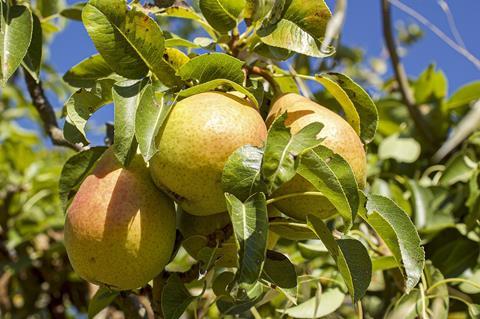A pivotal study has shed light on the intricate mechanisms of nonhost resistance (NHR) in plants, a critical defense against a broad spectrum of pathogens.

By identifying and characterizing four novel core effectors from the pathogen Colletotrichum fructicola, researchers have unveiled key players in the plant Nicotiana benthamiana’s immune response. This discovery is set to transform approaches to plant disease management, offering a pathway to bolster crops against devastating fungal infections.
Control methods
Plant diseases caused by pathogens like Colletotrichum fructicola lead to significant agricultural losses, particularly in fruit crops such as pear, apple, and peach. Traditional control methods often fail as pathogens adapt to plant defenses. Nonhost resistance (NHR) offers a promising alternative due to its robustness and broad-spectrum effectiveness.
NHR occurs when a plant species is naturally resistant to pathogens affecting other species. Understanding the molecular mechanisms behind NHR is crucial for developing sustainable and effective disease management strategies. Based on these challenges, exploring NHR mechanisms is essential for advancing agricultural resilience.
Researchers from Anhui Agricultural University, in collaboration with Northwest A&F University, have made a significant stride in understanding plant-pathogen interactions. Their findings (DOI: 10.1093/hr/uhae078), published in the journal Horticulture Research on March 14, 2024, reveal the role of novel core effectors in the nonhost Nicotiana benthamiana’s response to the pear anthracnose pathogen Colletotrichum fructicola.
The research team isolated a virulent strain of Colletotrichum fructicola from pear and studied its interaction with the nonhost plant Nicotiana benthamiana. They identified four novel core effectors—CfCE4, CfCE25, CfCE61, and CfCE66—using bioinformatics and agroinfiltration-mediated screening. These effectors were found to induce cell death and activate immune responses in N. benthamiana. The effectors’ activity depends on the BAK1 coreceptor and helper NLRs (ADR1, NRG1, and NRCs).
Further analysis showed that these core effectors trigger significant immune responses, enhancing the plant’s resistance to the pathogen. This study represents the first comprehensive characterization of Colletotrichum fructicola core effectors, providing valuable insights into the mechanisms of NHR and highlighting the potential for using these findings to develop new strategies for managing anthracnose disease in various horticultural crops.
Dr. Jiajun Nie, a corresponding author of the study, stated, “Our findings represent a significant advancement in understanding NHR. By identifying these core effectors, we can better comprehend how plants recognize and respond to pathogens, which is crucial for developing effective disease management strategies.”
The identification of these core effectors offers valuable insights for developing resistant crops through genetic engineering and selective breeding. By leveraging the understanding of NHR, agricultural practices can be enhanced to mitigate the impact of pathogenic fungi, ensuring sustainable crop production and food security.







No comments yet